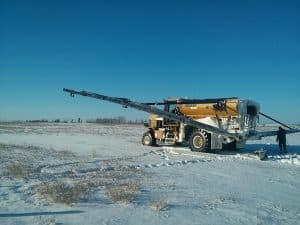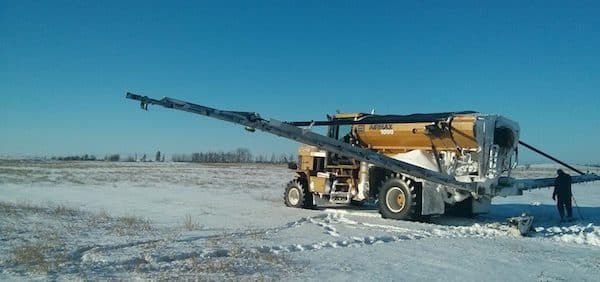Earlier this year, Canola Digest magazine posed this question to experienced fertilizer specialists from each Prairie province. Canola Digest wanted them to identify high-loss situations and provide better options to benefit farm profitability and reduce losses. Here are their three worst-case scenarios.
Broadcasting N in the fall
Surface spreading of nitrogen (N) fertilizer in the fall is a major risk for losses, and should be avoided.
How to make it better: If N fertilizer is applied in fall, it should be banded, preferably as late as possible – but not too late (see below). Banding helps to slow down the conversion of N fertilizers such as urea (46-0-0) or anhydrous ammonia (82-0-0) into nitrate, which is vulnerable to leaching and denitrification. Furthermore, banding also helps to reduce volatilization and the amount of N immobilized by soil microbes.
Don’t apply too late. In Manitoba, fertilizer cannot be applied after November 10. Other provinces don’t have that deadline, but applications on snow or into frozen ground that can’t provide a seal, is bad practice in general.

NH3 placed too shallow
Anhydrous ammonia (NH3) has the potential for significant volatilization losses if shallow application is made in dry, sandy or lumpy soils.
How to make it better: If the surface soil is very dry and sandy, one should place the ammonia deeper (4” or so) to moisture to aid in retention and conversion to ammonium. The greater depth also gives the ammonia gas more opportunity to react with water and the soil before it diffuses through the pores to the surface. Also make sure the injection channel is closed up behind the opener. If the soil is very lumpy with large pores, this will reduce contact and increase rate of movement of ammonia gas to the surface. Under these conditions, a granular or liquid form of N may be a better selection, but even with these forms it is important that the fertilizer is covered with soil.
In general, the best management practice for NH3 is deep injection under moist conditions with good slot closure, and ideally into cool soil temperatures.
Avoid seed-placed urea
Various studies, including an Alberta-wide study in 2007-12 comparing ESN, urea and a blend (75 per cent ESN and 25 per cent urea) under a range of application options and conditions, have shown that seed-placed urea results in poor growth and greater seedling damage.
How to make it better: Banding nitrogen outside the seed row is the better option. (In fact, the only fertilizer worth putting with the seed is a starter rate of phosphate.) If a farm’s seeding and fertilizer system is a single-shoot set up, which is not ideal for canola seed survival and crop emergence, then the Alberta study showed that ESN is the better choice and worth the extra cost. In this scenario banding your nitrogen prior to seeding and/or top-dressing nitrogen during the growing season should be considered.
